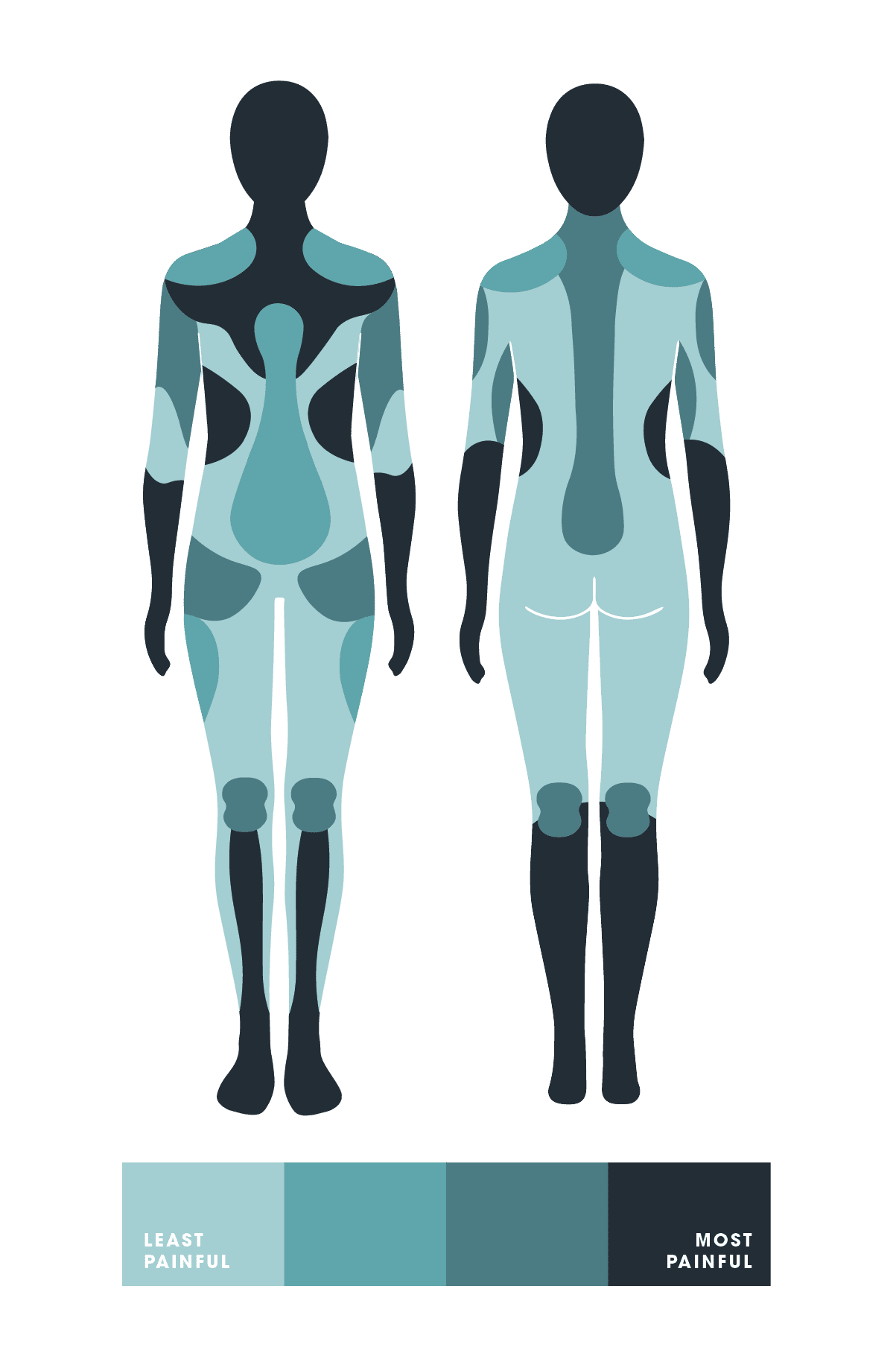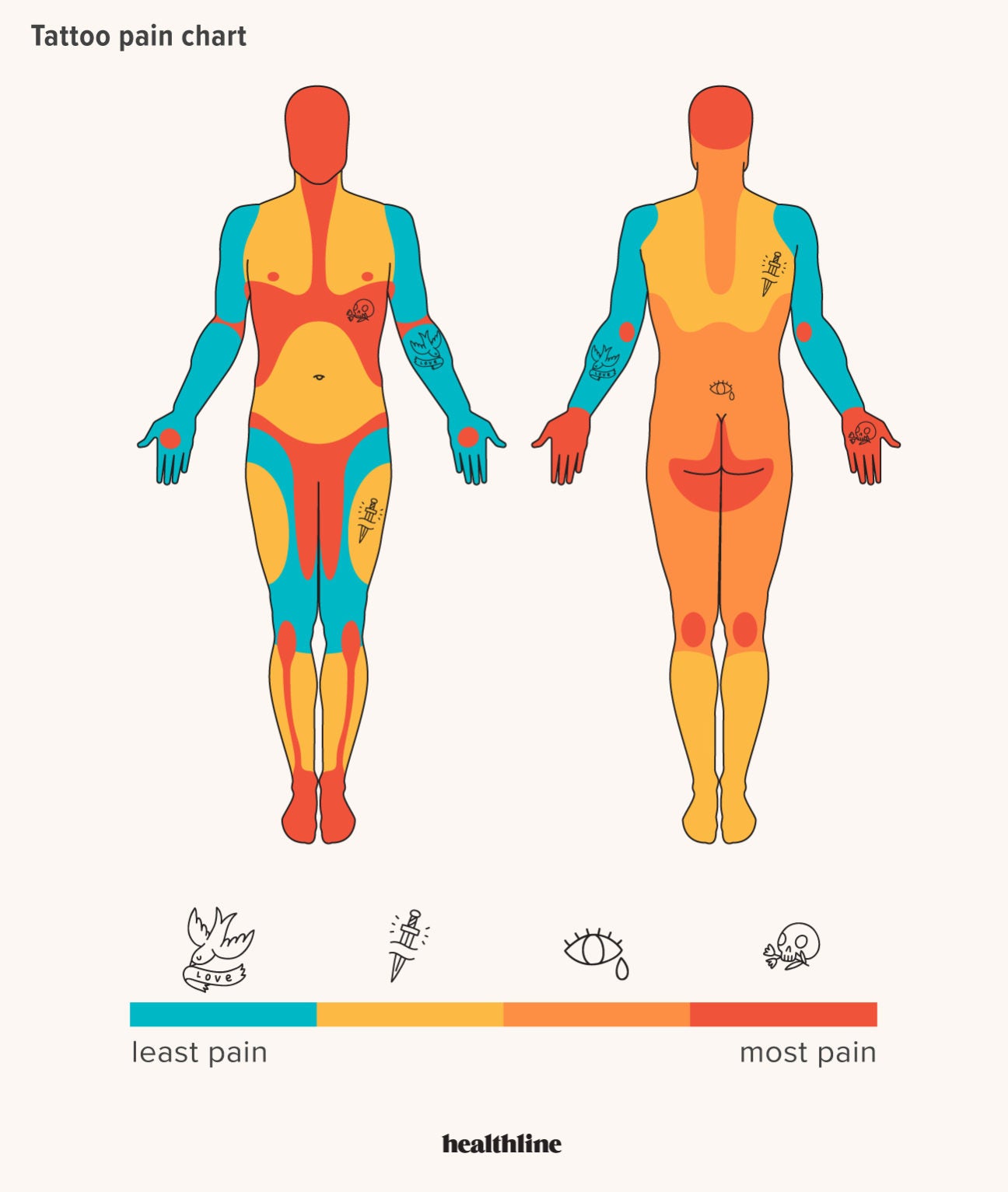
#Painful tattoo spots skin#
“Tattooing the larger, stretched version of the image - as well as the skin being stretched thin - can be really painful.”

Then they’ll sit and bend forward to get a good stretch, and the stencil will enlarge to be 150 percent of the size of the original tattoo.” With a lower back tattoo, the artist is essentially tattooing an elongated version of the image so when the client stands up again, the image retains its original shape and size, he explains.

“Basically, the stencil is put on while the client is standing up, as that’s the way the tattoo will mostly be viewed. In terms of the latter, Suerte says it can be “extremely painful” to get a tattoo there. The pain is greater in those areas because there isn't a lot of matter separating the skin from the bone - in other words, they lack a “cushion” of muscle and fat - adds Suerte.īut both artists tell Bustle that the ideal tattoo pain chart would feature more enlarged sections and greater detailing, especially in specific areas like the front inner thigh, the back of the knee, most of the stomach, smaller, bonier regions like the fingers, toes, and ankles, and the lower back. “ that the chest, sternum, joints, shins, and feet can all be painful to get tattooed,” Otsuji says. In assessing the above image of a popular tattoo pain chart, Suerte and Shaugnessy Otsuji, tattoo artist and founder of Studio Sashiko, agree that it’s mostly accurate. What’s more, if you go for an intricate tattoo that takes a long time on an “easy” part of the body, it can eventually become as painful as a quick tattoo on what’s considered a “painful” spot. “Even not being in a good mood can affect how one deals with the discomfort of getting tattooed,” he adds. According to Adam Suerte, tattoo artist and co-owner of Brooklyn Tattoo, it’s wise to consider a few external factors as well, such as your pain tolerance, whether or not you had sufficient sleep the night before your tattoo appointment, and if you’re feeling unwell that day. It’s important to note that while generally useful, tattoo pain charts aren’t a one-size-fits-all formula.
#Painful tattoo spots free#
Feel free to ask your tattoo parlor which pain chart they use more than likely, they’ll have one. Colors like blue, yellow, orange, and red are used to indicate different levels of pain (and there’s often a legend included, too, which will show you what each color means). Though tattoo pain charts can vary, for the most part, they consist of an illustration featuring both the front and the back of a body. The colorful graphic can be useful in highlighting certain areas of the body that can feel particularly painful during the tattooing process. Whether you’re a first-timer or an ink enthusiast, it can be helpful to take a peek at a tattoo pain chart before you book an appointment. In the market for fresh ink? Can’t blame you - with all the incredible tattoo ideas out there, from micro designs to cool patchwork tats, there’s a smorgasbord of body art inspo available.


 0 kommentar(er)
0 kommentar(er)
